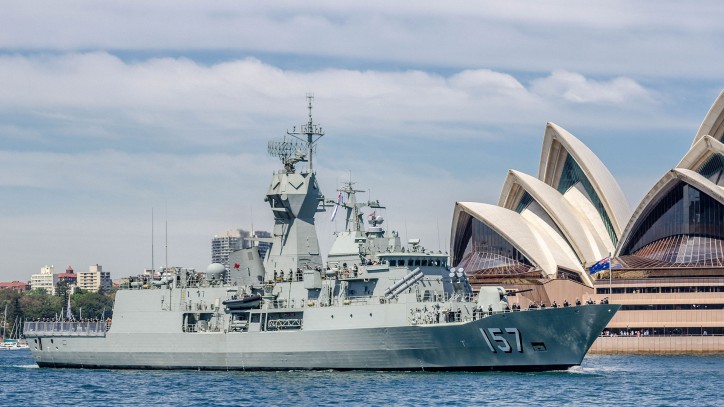Australia may end up having a far more numerous navy given that the country’s government is to embark on a national shipbuilding program which produces new ships every two years. The Australia Strategic Policy Institute recently came up with a study according to which this will probably involve the sale of the state-owned ASC shipbuilding company.
This move will only be deemed profitable if ASC is able to construct vessels at a lower price than the one it offers at the moment. ASPI analysts Mark Thomson and Andrew Davies commented that the nature of the continuous manufacturing process suggests that the navy may likely end up with a warship fleet of a total of 14-15 ships, which will be a significant increase when regarding the current fleet consisting of 8 Anzac frigates and 3 air warfare destroyer vessels.
The brand new ships will most probably have a shorter service life of roughly 20 years, and not provide their services for a period of 30 years as they are now. In order to cover any potential decrease in domestic demand, there wouldn’t have to be any exports, more feasible given that efficiency raises and the falling Australian dollar contributes for them to be cheaper. ASPI commented much of the debate regarding ship manufacturing centered on the valley of death, the time period between the ending of current projects and the beginning of new ones.

HMAS Perth (FFH 157) by Hpeterswald: Licensed under CC BY-SA 3.0 via Wikimedia Commons
The significant job cut downs in yards in Newcastle and Melbourne are providing state governments, unions and shipbuilders significant leverage. ASPI commented that this was one of those instances with the tail wagging the dog, as naval shipbuilding’s purpose is to supply the navy with vessels rather than provide the industry with work. The federal government, however, is evidently following the events, as Prime Minister Tony Abbot signaled recently that the government is fairly close to undergoing an all new shipbuilding plan that will come along with a rolling build program, and that will probably produce replacements for the Anzac frigates which have almost reached their respective retirement age as 2025 nears.
“Keeping in regard the strong level of political pressure associated with the probable offshore construction of the future submarine vessels, there is a risk that the government is going to be forced to promise the future frigate program to South Australia as a sort of a sop,” according to the study.
The Australian shipbuilding industry has a rather mixed record. The 10 new Anzac frigates project was a success with the vessels being delivered as scheduled and on budget. The project at hand for constructing three air warfare destroyer ships, however, is already running two years late and is approximately USD 1 billion over the initially appointed budget.
ASPI commented that it is a well recorded fact that privately owned yards perform better and that the traditional boom and bust practice serves as an undermining factor for performance levels.